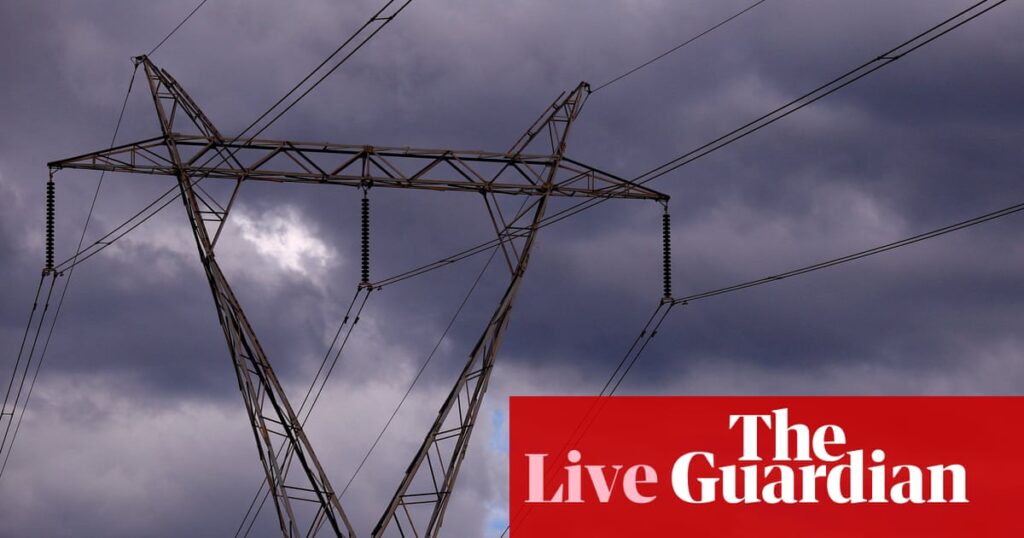
The Australian Energy Market Operator (AEMO) has released an optimistic report on the nation’s electricity grid, projecting a 21% growth in large-scale energy generation demand over the next decade. This positive outlook is contingent upon the timely completion of planned investments in renewable energy, storage, and transmission infrastructure. Meanwhile, New South Wales grapples with severe weather conditions, leading to multiple flood advisories and a search operation for two missing individuals after a car plunged into a river.
Renewable Energy Investments: A Promising Future
According to AEMO’s annual report, the national electricity grid’s reliability has improved compared to last year, assuming all proposed investments are executed as scheduled. AEMO’s chief executive, Daniel Westerman, emphasized the importance of these investments, stating, “The 10-year investment pipeline to manage energy reliability is healthy.” However, the impending retirement of 11GW of coal power stations over the next decade underscores the urgency of new infrastructure development.
The report highlights the primary drivers of increased electricity demand: the rapid expansion of data centers, accelerated business electrification, and the inclusion of prospective industrial energy users. Despite the positive outlook, AEMO warns of a “small reliability gap” of 80MW in Queensland this summer and a larger gap of 390MW in South Australia next financial year, should the Torrens Island B gas plant retire as planned.
Transitioning from Coal to Renewables
The shift from coal to renewable energy sources is a significant transformation for Australia’s energy sector. As coal power stations retire, the timely deployment of renewable energy projects becomes critical. The transition aligns with global trends towards sustainable energy solutions, aiming to reduce carbon emissions and combat climate change.
Experts believe that Australia’s commitment to renewable energy investments will not only ensure energy reliability but also position the country as a leader in the global energy transition. This development follows international efforts to meet climate goals and reduce reliance on fossil fuels.
Severe Weather and Missing Persons in New South Wales
In a separate development, New South Wales is currently facing severe weather conditions, resulting in numerous flood advisories across the state. The New South Wales State Emergency Service (SES) has urged residents to stay informed and exercise caution during their morning commutes, as heavy rainfall is expected to continue.
Amidst these challenging conditions, emergency services are conducting a search operation for two individuals missing after a car crashed into the Macdonald River, north of Sydney. The incident occurred late last night, and while one passenger managed to escape, two others remain unaccounted for. The SES and rural fire service are actively searching the area.
Impact of Extreme Weather on Communities
Extreme weather events, such as the current heavy rainfall in New South Wales, highlight the vulnerability of communities to climate change. Flooding can lead to significant disruptions, property damage, and, in severe cases, loss of life. The situation underscores the need for robust emergency response systems and infrastructure resilience to mitigate the impacts of such events.
As communities brace for potential flooding, authorities emphasize the importance of preparedness and adherence to safety advisories. The ongoing search for the missing individuals serves as a poignant reminder of the human toll that extreme weather can exact.
Broader Implications and Future Outlook
The developments in Australia’s energy sector and the current weather challenges in New South Wales reflect broader themes of adaptation and resilience in the face of climate change. The transition to renewable energy is a crucial step towards a sustainable future, while the response to extreme weather events highlights the need for comprehensive climate adaptation strategies.
Looking ahead, Australia’s energy landscape is poised for significant transformation, with renewable energy investments paving the way for a cleaner, more sustainable future. Meanwhile, addressing the immediate challenges posed by severe weather requires coordinated efforts from government agencies, communities, and individuals to ensure safety and minimize disruptions.
As Australia navigates these complex challenges, the commitment to renewable energy and climate resilience will be key to securing a sustainable and prosperous future for all Australians.





